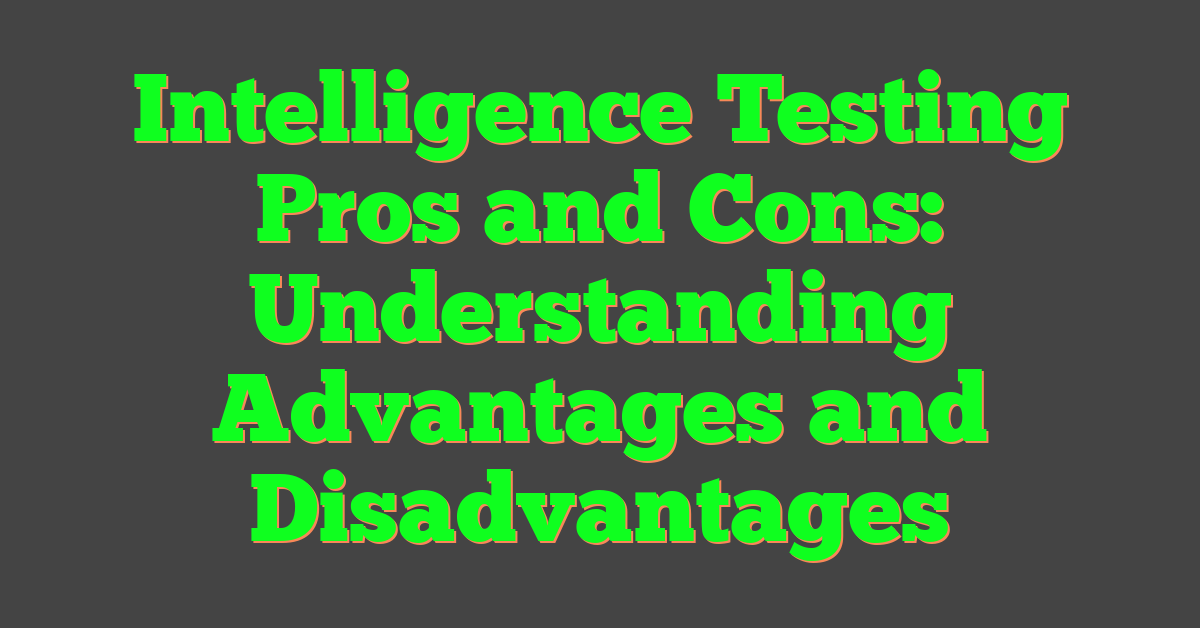The ownership of The Lord of the Rings has changed hands several times since J.R.R. Tolkien first sold certain rights in 1968. For decades, The Saul Zaentz Company controlled these rights through Middle-earth Enterprises, but in 2022, a significant shift occurred. The Swedish company Embracer Group purchased Middle-earth Enterprises, becoming the new owner of the film, gaming, merchandising, and various other adaptation rights to The Lord of the Rings and The Hobbit franchises.

While Embracer Group now holds many of the adaptation rights, the situation is complex. Warner Bros. still licenses the film rights to The Hobbit and The Lord of the Rings, including the appendices. Meanwhile, Amazon acquired specific television rights to create their Rings of Power series. This has created what some describe as a confusing mess of divided rights for telling stories in Middle-earth.
Key Takeaways
- Embracer Group purchased Middle-earth Enterprises in 2022, acquiring the major adaptation rights to The Lord of the Rings franchise.
- Warner Bros continues to license film rights while Amazon holds specific television rights for their streaming content.
- The rights situation remains complex with different companies controlling various aspects of Tolkien’s Middle-earth across different media formats.
Ownership History of ‘The Lord of the Rings’
The rights to J.R.R. Tolkien’s beloved fantasy epic have changed hands multiple times since their original sale, creating a complex web of ownership that affects everything from movies to video games to merchandise.
From J.R.R. Tolkien to United Artists
J.R.R. Tolkien sold the film and merchandising rights to his works in 1968. This decision would have far-reaching consequences that continue to this day. At the time, Tolkien needed money to pay an unexpected tax bill and couldn’t have predicted how valuable these rights would become.
United Artists acquired these rights initially. They planned to produce animated films based on the books. However, they struggled to develop a successful adaptation that captured the epic scale of Middle-earth.
The rights didn’t include everything, though. Tolkien kept the publishing rights and some other intellectual property elements. This early division of rights created the foundation for the complicated ownership situation we see today.
Saul Zaentz Company and Middle-earth Enterprises
In 1976, producer Saul Zaentz purchased the rights from United Artists. He created Tolkien Enterprises (later renamed Middle-earth Enterprises) to manage these valuable assets.
This company controlled the rights to produce films, stage productions, merchandise, and other adaptations based on The Hobbit and The Lord of the Rings. They didn’t own the books themselves, just the ability to adapt them into other media.
Middle-earth Enterprises licensed these rights to various companies over the years. Warner Bros. doesn’t own the rights outright but licenses them for their films. The same arrangement applied to video game developers and other merchandise creators.
The Saul Zaentz Company maintained control of these rights for decades, profiting enormously from Peter Jackson’s hugely successful film adaptations.
The Role of the Tolkien Estate
The Tolkien Estate, managed by J.R.R. Tolkien’s descendants, has maintained ownership of the literary works and copyright to the original books. This gives them significant control over certain aspects of the intellectual property.
The Estate has been protective of Tolkien’s legacy. They’ve sometimes had a tense relationship with film adaptations and other media that didn’t align with their vision of the author’s work.
In a major development, the Estate licensed television rights to Amazon for their series “The Rings of Power.” This deal was separate from the film rights held by Middle-earth Enterprises, showing how the rights have become divided over time.
The Estate still controls unpublished works and other aspects of the Tolkien literary universe.
The Embracer Group Acquisition
In 2022, a major shift occurred when Swedish gaming company Embracer Group purchased Middle-earth Enterprises from the Saul Zaentz Company. This acquisition brought the adaptation rights under new ownership for the first time in decades.
Embracer Group paid an estimated $2 billion for these rights. They gained control of the film, gaming, merchandising, theme parks, and stage production rights for The Lord of the Rings and The Hobbit.
The acquisition created a new division called Embracer Freemode to manage these valuable assets. This change in ownership opened possibilities for new adaptations and expansions of the Middle-earth universe.
Despite this major acquisition, the rights situation remains divided without “one ring to rule them all.” Different entities control different aspects of Tolkien’s world, creating an ongoing challenge for fans trying to understand who owns what.
Film and Television Rights
The ownership of Lord of the Rings film and television rights has a complex history with multiple studios and companies holding different pieces of the franchise. Rights have changed hands several times since Tolkien first sold them.
New Line Cinema’s Adaptation and Rights
New Line Cinema, a division of Warner Bros., holds the film rights to The Hobbit and The Lord of the Rings including the appendices. These rights weren’t always with them though. The journey began when producer Saul Zaentz purchased the film adaptation rights in the 1970s from United Artists.
New Line Cinema later secured these rights, which allowed Peter Jackson to create his iconic trilogy. The success of these films transformed the franchise into a global phenomenon, with characters like Galadriel becoming household names.
When questions about rights ownership emerged in 2022, Warner Bros. firmly asserted their control over the Middle-earth film rights. This was important because it established who could make future movies.
War of the Rohirrim and Expansion of the Cinematic World
The upcoming animated film “The War of the Rohirrim” represents Warner Bros’ continued development of the Middle-earth cinematic world. This film explores the history of Rohan’s people, expanding the universe Jackson established.
The production values for these new projects remain high, maintaining the visual standards fans expect from Middle-earth adaptations. Warner Bros has been careful to keep continuity with the original films while exploring new stories.
This expansion shows how valuable the Lord of the Rings franchise remains in Hollywood. By developing animated features alongside potential live-action films, Warner Bros is creating a more complete vision of Tolkien’s world on screen.
The Amazon Deal and ‘The Rings of Power’
In a separate arrangement, the Tolkien Estate licensed television rights to Amazon, leading to their production of “The Rings of Power” series. This deal, reportedly worth around $250 million just for the rights, focuses on the Second Age of Middle-earth.
The Amazon series explores earlier events than the movies, featuring a younger version of Galadriel as one of its central characters. Its massive budget—approximately $1 billion for the first five seasons—makes it one of the most expensive television productions ever.
This arrangement demonstrates how the rights to Tolkien’s work are split between different media types. Warner Bros controls the movies, while Amazon holds certain television rights, allowing both companies to develop different aspects of the Middle-earth saga simultaneously.
Literary and Merchandising Rights
The ownership of Tolkien’s literary works and merchandise licensing has changed hands over the years, with significant implications for how fans experience Middle-earth content across different media.
Books, E-books, and Audiobooks
The primary literary rights to J.R.R. Tolkien’s works, including the original texts of The Lord of the Rings and The Hobbit, are now owned by Embracer Group. This Swedish gaming company acquired these rights in 2022 through their purchase of Middle-earth Enterprises.
Before this acquisition, Middle-earth Enterprises (formerly known as Tolkien Enterprises) was a division of The Saul Zaentz Company that held exclusive worldwide rights to key elements of Tolkien’s most famous works.
The publishing rights for the books, e-books, and audiobooks are managed through HarperCollins Publishers, who work with the Tolkien Estate. This arrangement allows for continued publication of Tolkien’s original texts and posthumous works edited by his son Christopher Tolkien.
Merchandise Licensing and Brand Partnerships
Embracer Group now controls the merchandise licensing rights for products based on The Lord of the Rings and The Hobbit. This includes toys, clothing, collectibles, and themed experiences.
The merchandise rights give Embracer the ability to approve and license various products that feature characters, locations, and imagery from Middle-earth. This encompasses everything from action figures to themed board games.
Popular merchandise partners have included companies like LEGO, Funko, Weta Workshop, and various clothing retailers. These partnerships have resulted in thousands of licensed products over the decades.
Theme park attractions and live experiences also fall under merchandising rights. The licensing arrangements allow for themed restaurants, exhibitions, and immersive experiences that bring Tolkien’s world to life for fans beyond the pages of books or screens.
Gaming and Interactive Experiences
The Lord of the Rings franchise has expanded into various interactive entertainment formats, offering fans multiple ways to experience Middle-earth beyond books and films. These experiences range from digital adventures to physical games and immersive attractions.
Video Games and Development Studios
The rights to develop Lord of the Rings video games are now held by Embracer Group, which acquired Middle-earth Enterprises in 2022. This Swedish gaming company paid approximately $395 million for the rights to Tolkien’s most famous works.
Embracer’s acquisition has reshaped the gaming landscape for Middle-earth. The company owns multiple development studios that can now create games based on the franchise. Among these studios is Tripwire Interactive, known for titles like Killing Floor and Maneater.
Recent Lord of the Rings games include “The Lord of the Rings: Gollum” and “Middle-earth: Shadow of War.” Embracer’s Freemode division also oversees gaming initiatives related to the franchise.
Fans can expect more diverse gaming experiences in the future. Embracer will leverage its extensive network of studios to explore different genres and storytelling approaches within Tolkien’s world.
Board Games and Role-playing Opportunities
The tabletop gaming rights for Lord of the Rings have led to numerous board games and role-playing games that bring Middle-earth to game tables worldwide. Asmodee, a major board game publisher, has released several acclaimed Tolkien-based games.
Popular titles include “The Lord of the Rings: The Card Game” and “War of the Ring,” which let players experience epic battles and adventures from the books. These games range from cooperative experiences to competitive strategy games.
Role-playing games set in Middle-earth allow players to create their own characters and stories within Tolkien’s world. “The One Ring” RPG system has been particularly successful in capturing the feeling of the books.
With Embracer Group now controlling the IP rights, fans may see new partnerships and game releases in the tabletop space, potentially expanding the types of games available.
Theme Parks and Tourist Attractions
The acquisition of Lord of the Rings rights by Embracer Group includes theme park rights, opening possibilities for immersive Middle-earth attractions. Currently, no major dedicated Lord of the Rings theme parks exist, but the potential is significant.
Visitors can experience pieces of Middle-earth through existing attractions like the Hobbiton Movie Set in New Zealand, where scenes from Peter Jackson’s films were shot. This tourist destination allows fans to walk through the Shire and visit hobbit holes.
Several exhibitions featuring props, costumes, and art from the films have toured globally, giving fans a chance to see authentic items from the movies up close.
With Embracer now holding theme park rights, the possibility of dedicated Lord of the Rings attractions or even full theme parks has increased. The company might partner with established theme park operators to create immersive experiences that bring Middle-earth to life.
Performing Arts and Stage Productions

The Lord of the Rings has expanded beyond books and films to captivate audiences in theaters and concert halls worldwide. These adaptations bring Tolkien’s beloved world to life through unique artistic interpretations.
Live Theater and Musical Interpretations
The theatrical rights to The Lord of the Rings have seen interesting developments over the years. While the Tolkien Estate holds the original copyright, performance rights are licensed to various entities for stage productions.
The most notable stage adaptation was the massive Lord of the Rings musical that premiered in Toronto in 2006 before moving to London’s West End in 2007. With a reported budget of $27 million, it was one of the most expensive productions in theater history.
Smaller theatrical companies often need to secure licenses through Middle-earth Enterprises (formerly part of The Saul Zaentz Company, now owned by Embracer Group) to create Lord of the Rings stage performances.
Regional and amateur theater groups occasionally produce adaptations, though these typically focus on specific portions of the story rather than attempting to stage the entire epic.
Concerts and Symphonic Adaptations
The musical world of Middle-earth has found particular success in concert halls around the globe. Howard Shore’s iconic film scores have been adapted into symphonic suites performed by orchestras worldwide.
“The Lord of the Rings Symphony” is a six-movement piece created by Shore that covers the entire musical journey of the trilogy. It features orchestra, chorus, and soloists, bringing the emotional landscape of Middle-earth to concert audiences.
“The Lord of the Rings: Live to Projection” concerts present the films with the score performed live by orchestras and choirs, creating an immersive experience for fans. These events have become popular attractions at major venues.
Rights to perform these musical adaptations are typically managed through agreements with both the Embracer Group (which owns film and merchandising rights) and the music publishers who control Shore’s compositions.
Local orchestras often feature selections from the Lord of the Rings soundtracks in their film music programs, introducing Tolkien’s world to classical music audiences.
The Future of Middle-earth

The ownership landscape of Lord of the Rings rights is shaping exciting new possibilities for Middle-earth content. Fans can expect fresh storytelling experiences across multiple platforms as rights holders explore ways to expand this beloved fantasy universe.
Prospects for New Film and Series Releases
With Embracer Group now owning many LOTR rights, the Middle-earth film landscape is poised for significant expansion. They acquired the rights to both The Lord of the Rings and The Hobbit literary works, opening doors for new cinematic adaptations.
Meanwhile, Amazon continues to develop its flagship series “The Rings of Power.” This show, based on rights to the LOTR appendices, represents just one direction the franchise is heading.
Several animated features are also in development, including “The War of the Rohirrim,” which will explore untold stories from Middle-earth’s rich history.
Film studios are carefully planning a strategic release schedule to avoid market saturation while maintaining fan interest in Tolkien’s world.
Transmedia Opportunities and IP Expansion
The Middle-earth IP offers tremendous potential beyond traditional media. Video games set in Tolkien’s world continue to find success, with several new titles in development focusing on previously unexplored regions and time periods.
Board games, collectibles, and interactive experiences are expanding the ways fans can engage with Middle-earth. Theme park attractions based on iconic locations like the Shire and Rivendell are being considered by rights holders.
Digital Expansion Areas:
- Mobile gaming applications
- Virtual reality experiences
- Interactive web content
- Digital collectibles and NFTs
Publishing rights for companion books, art collections, and expanded universe stories provide another avenue for growth. These transmedia approaches help reach new audiences while deepening engagement with existing fans.
Potential for New Cross-platform Collaborations
The fragmented rights ownership actually creates unique opportunities for collaboration.
Amazon’s streaming interests could potentially intersect with Embracer’s gaming and film rights to create cohesive storytelling across platforms.
The Tolkien Estate’s ownership of core copyrights means they maintain quality control over how the franchise evolves.
This collaborative approach helps ensure Middle-earth remains true to Tolkien’s vision.
International partnerships may expand Middle-earth’s global appeal with region-specific content.
For example, anime-style adaptations or Bollywood-inspired productions could introduce the fantasy world to new audiences.
Cross-promotion between various Middle-earth properties creates a more unified brand experience despite the distributed rights.
Fans benefit from this approach through richer, more interconnected storytelling experiences.




